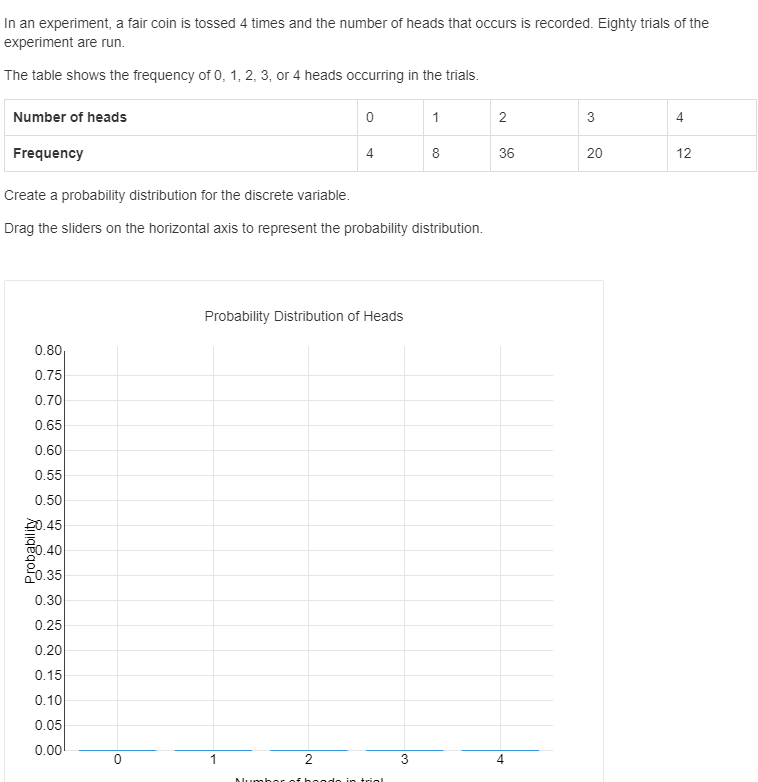1.

| probabillity that number of heads in trial is_ | 0 | __=__ | 4 / 80 | __=__ | 0.05 |
| probability that number of heads in trial is | 1 | = | 8 / 80 | = | 0.10 |
| probability that number of heads in trial is | 2 | = | 36 / 80 | = | 0.45 |
| probability that number of heads in trial is | 3 | = | 20 / 80 | = | 0.25 |
| probability that number of heads in trial is | 4 | = | 12 / 80 | = | 0.15 |
A few things I noticed:
| 1.__ | You might want to add a citation for sentences where you give a statistic like these: | |||
| ___ | "This is a large number compared to the 2.6 million people who lost their jobs during the 2008 financial crisis, or even the thirty million who lost their jobs during the Wall Street Crash of 1929." |
| ||
| "Kai-Fu Lee estimates that there will be thirty to forty million displaced workers by 2030 in the United States alone." For this one you can just put a page number because you stated the author in the sentence. | ||||
| "He has said that AI may replace over fifty percent of all jobs in the next ten years." Also for this one you can just put a page number I think. |
| |||
| 2. | It might not be grammatically correct to use a colon after "because" or "that" when you introduce a quote. |
| ||
| 3. | An ellipse should have spaces between the periods . . . |
| ||
| 4. | I think you just need the period after the (Lee 93) and not within the quote. | |||
| 5. | The works cited should have a hanging indent in MLA format. |
| ||
Other than that technical stuff I think it's really well written and easy to follow ![]() 👍
👍
3.)
cos θ = x / r where x is the x-coordinate of C and r is the radius.
cos θ = x / 26
Let x and y be the coordinates of point C. We know...
x2 + y2 = 262
x2 + 242 = 262
x2 = 262 - 242
x = ±√[ 262 - 242 ]
x = ±√[ 100 ]
x = ± 10
Point C is in Quadrant II, so the x-coordinate of point C must be negative.
x = -10
cos θ = x / 26
cos θ = -10 / 26
cos θ = -5 / 13
Here's a graph to check: https://www.desmos.com/calculator/g8ylepybea